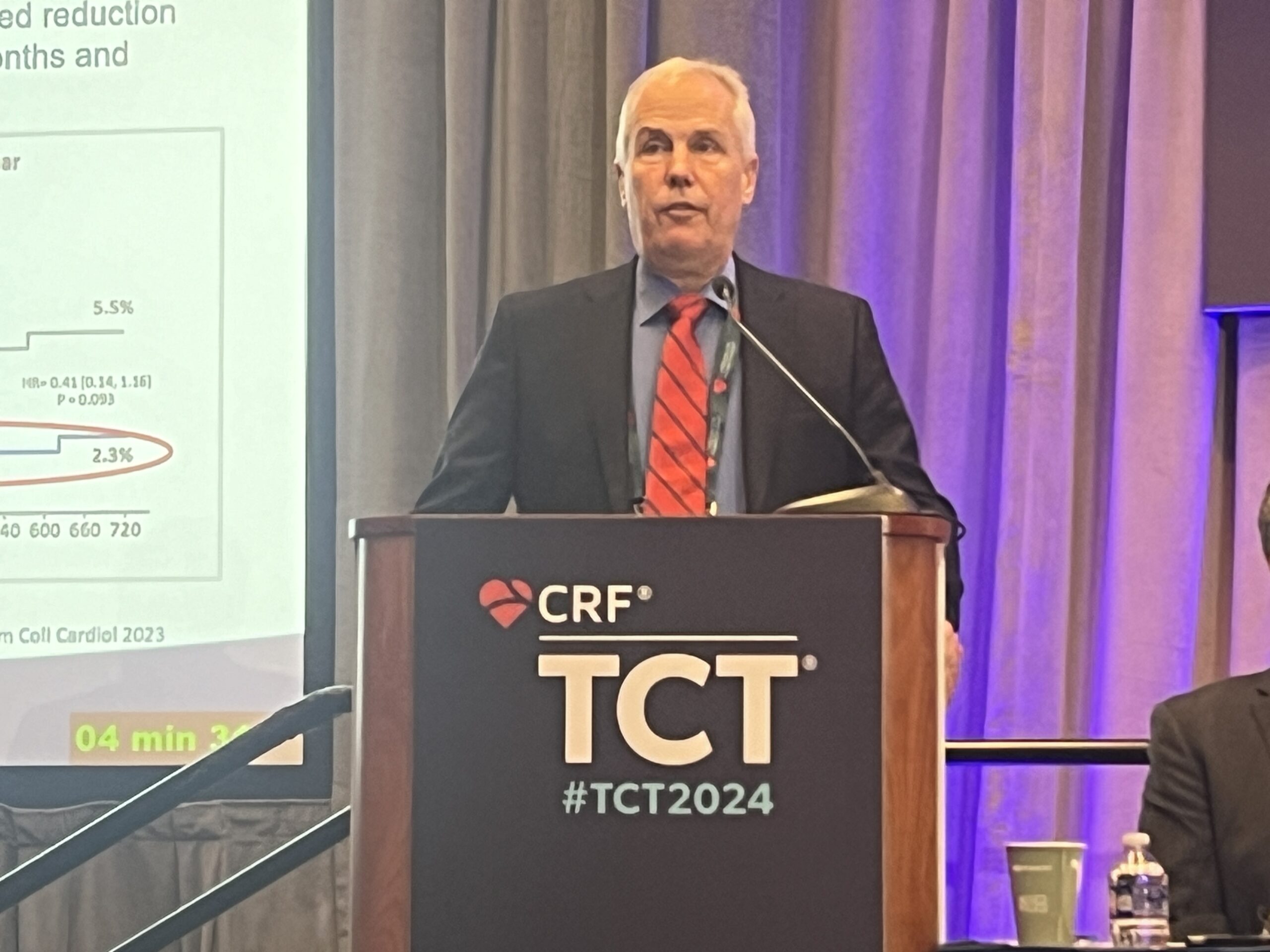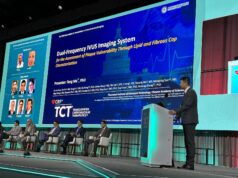
Late-breaking data from the INFINITY SWEDEHEART trial demonstrate significant benefit of the DynamX coronary bioadaptor system (Elixir Medical) compared to contemporary Resolute Onyx (Medtronic) zotarolimus drug-eluting stent (DES) for target lesion failure (TLF) in complex patient population subsets.
The data, which include an analysis of patients with acute coronary syndrome (ACS), small vessel lesions, and lesions within the left anterior descending (LAD) artery, were presented by David Erlinge (Lund University, Lund, Sweden) during a late breaking clinical trial session at TCT 2024 (27–30 October, Washington, DC, USA).
“Historically, patients with ACS are at a higher risk for adverse events after percutaneous coronary intervention (PCI) in part because of higher rates of comorbidities, reduced heart function, and more frail patient condition,” said Erlinge, the study’s principal investigator.
“Analysis of this critical population was key to understanding the effects of the bioadaptor’s unique mechanism of action on improving safety and effectiveness after PCI. With sustained reduction and plateauing of TLF after six months as compared to stents, the data further validate the substantial clinical benefit of Bioadaptor and its potential to impact the treatment and long-term success in high-risk patient populations.”
The device is implanted in a similar fashion to a DES but begins “unlocking” after it is encapsulated with tissue and its absorbable polymer coating is resorbed. This is intended to allow the vessel to grow and adapt to maintain established blood flow lumen.
Initial results of the trial, presented at the European Society of Cardiology (ESC) congress last month (30 August–2 September, London, UK), now published in The Lancet, showed that the bioadaptor system met non-inferiority at one year versus the stent across the trial’s overall patient population.
Further data presented by Erlinge at TCT showed that after six months, clinical results in patients with ACS demonstrated TLF of 0.3% versus 1.8% (p<0.018), translating into 83% reduction and significant benefit for the bioadaptor compared to DES.
Additional analysis of clinically complex lesions associated with adverse DES outcomes, such as the left anterior descending (LAD_ artery and small vessels demonstrated 73% reduction (0.2% vs. 2.2%) in TLF rate after six months with the bioadaptor compared to treatment with DES. There were no TLF events in patients with small vessels (less than or equal to 2.75 mm) in the bioadaptor arm compared to 1.8% TLF with DES after six months.










